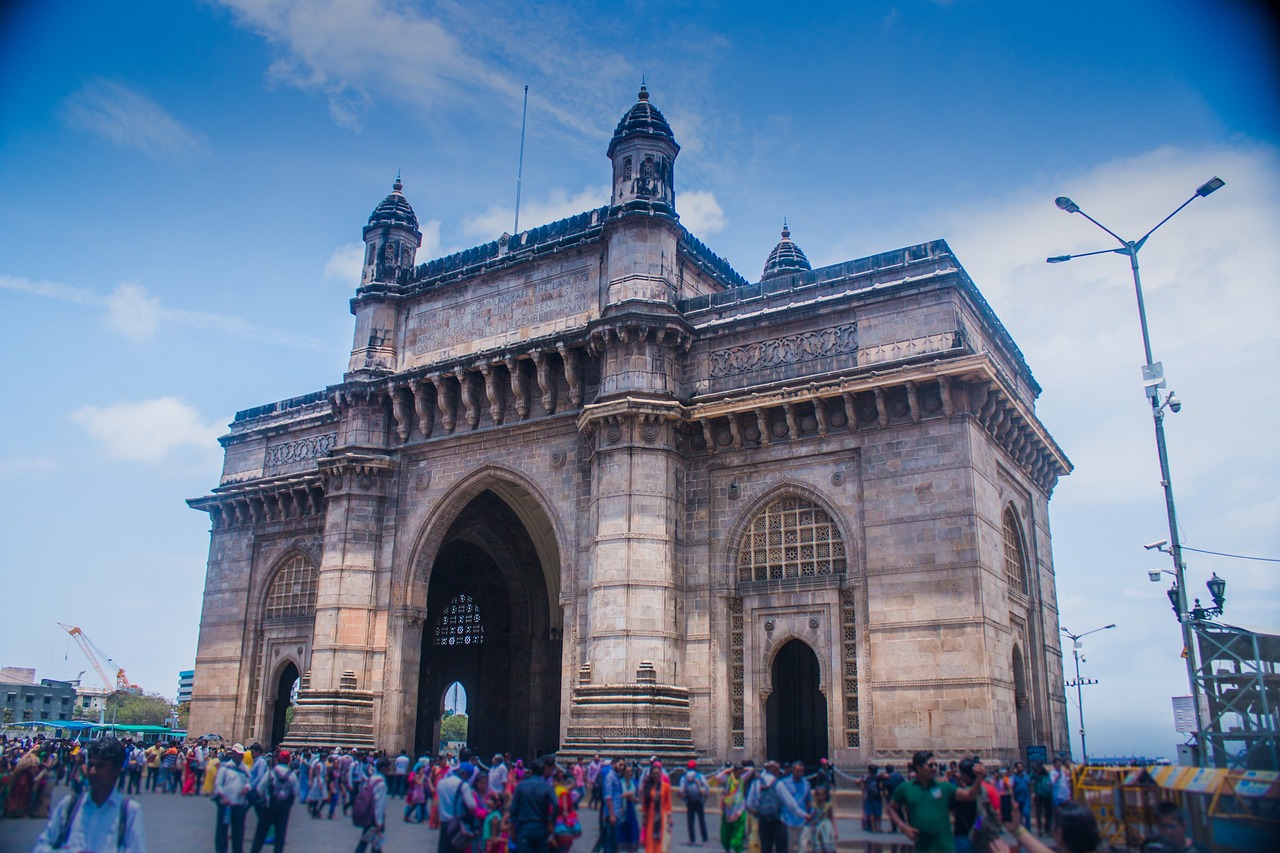Maharashtra, a land of vibrant culture, historical significance, and scenic beauty, is also the economic powerhouse of India. The state has undergone a remarkable economic transformation since 1960, emerging as a leader in various sectors. This article explores this journey, highlighting the key factors that have driven Maharashtra's growth and the opportunities that lie ahead.
Table of contents [Show]
Maharashtra - A State on the Rise:
| Maharashtra, situated on the western peninsular coast of India, has been a center of trade and commerce for centuries. Its strategic location along major trade routes and its fertile lands have always contributed to its economic prosperity. |
| However, the post-independence era marked a period of phenomenal growth. The State's Gross Domestic Product (GDP), a key indicator of economic activity, has witnessed a significant rise over the years. |
| This growth has been fueled by a strategic focus on key sectors like agriculture, manufacturing, and most importantly, services. |
| The Information Technology (IT) revolution further propelled Maharashtra's economy onto the global stage. |
| The State's pool of skilled professionals, coupled with supportive Government policies, created a fertile ground for IT companies to flourish. |
| This IT boom not only led to job creation but also attracted significant foreign investments and fostered the growth of ancillary services. |
Maharashtra's Economic Landscape in 1960:
To understand the magnitude of Maharashtra's economic transformation, it's essential to delve into the state's economic landscape in 1960:
| Back then, the economy was largely agrarian, with agriculture being the dominant sector. |
| Primary industries like cotton textiles and sugar production also played a significant role. However, the overall economic infrastructure was limited. |
| There was a lack of diversification across sectors, and challenges like inadequate infrastructure and limited irrigation facilities hampered agricultural productivity. |
| Despite these limitations, the seeds of future growth were already being sown. |
| The State Government's focus on improving irrigation facilities and agricultural practices laid the foundation for the Green Revolution, which would have a profound impact on Maharashtra's economy in the decades to come. |
Growth and Diversification: 1960s-1990s
The period between the 1960s and 1990s witnessed significant growth and diversification in Maharashtra's economy. Several key factors contributed to this transformation:
| Green Revolution: | The Green Revolution, a movement that swept through India in the 1960s and 1970s, had a major impact on Maharashtra's agricultural sector. |
| The introduction of high-yielding crop varieties, coupled with improved irrigation facilities and use of fertilizers, led to a substantial increase in agricultural productivity. | |
| This not only ensured food security for the State's growing population but also generated surpluses that could be channeled into other sectors. | |
| However, it's important to acknowledge that the Green Revolution's benefits were not evenly distributed, and some farmers struggled to adopt new practices or secure access to resources. | |
| Industrialization: | Maharashtra emerged as a major industrial hub during this period. |
| The establishment of industrial corridors around Mumbai, Pune, Nagpur, and other cities attracted significant investments. | |
| Key industries like automobiles, chemicals, pharmaceuticals, and engineering flourished. | |
| This industrialization not only boosted the State's GDP but also created numerous employment opportunities, particularly in urban areas. | |
| Infrastructure Development: | To support the growth of agriculture and industry, the Government invested heavily in infrastructure development. |
| The construction of roads, bridges, and dams improved connectivity within the state and with other parts of India. | |
| This enhanced transportation network facilitated the movement of goods and people, creating a more conducive environment for trade and commerce. |
Rise of Alternative Sectors:
| While agriculture and industry remained the backbone of Maharashtra's economy, the emergence of new sectors like tourism and financial services also played a noteworthy role. |
| Maharashtra's rich cultural heritage, historical sites, and natural beauty attracted a growing number of tourists, both domestic and international. |
| This growth in tourism led to the development of supporting infrastructure like hotels, restaurants, and transportation services, further contributing to the State's economic activity. |
| The financial services sector also witnessed significant growth during this period. |
| Mumbai, the country's financial capital, is home to major banks, insurance companies, and stock exchanges. |
| This concentration of financial institutions not only catered to the needs of Maharashtra's businesses but also played a crucial role in mobilizing investments for various sectors across the country. |
| The economic transformation of Maharashtra during the 1960s-1990s was a story of remarkable progress. |
| The State successfully diversified its economic base, moving beyond its agrarian roots and establishing itself as a leader in industry and services. |
The Services Sector Takes Center Stage:
Maharashtra's economic landscape has undergone a significant shift in recent decades. The services sector has emerged as the dominant force, contributing over 60% of the state's GDP. This sector encompasses a wide range of activities, including:
| Financial Services: | Mumbai, Maharashtra's financial capital, houses the headquarters of major banks, insurance companies, and stock exchanges, making it the financial hub of India. |
| Education: | The State boasts several prestigious universities and educational institutions, attracting students from across India and abroad. |
| This robust education sector not only fosters skilled manpower but also contributes to the overall development of the State. | |
| Healthcare: | Maharashtra has a well-developed healthcare infrastructure with renowned hospitals and medical facilities. |
| This sector not only caters to the state's population but also attracts medical tourism, generating additional revenue. | |
| Retail Trade: | The State has witnessed a boom in retail trade, with the emergence of modern shopping malls and a growing e-commerce sector. |
| This has created employment opportunities and caters to the evolving needs of consumers. | |
| Hospitality: | Maharashtra's tourism industry has fueled the growth of the hospitality sector. |
| Hotels, resorts, and other accommodation facilities cater to the needs of tourists, generating revenue and supporting local businesses. |
The services sector has become the engine of Maharashtra's economic growth. It is a major source of employment generation, attracting skilled professionals from various fields. Additionally, this sector contributes significantly to the state's tax revenue, providing resources for further development initiatives.
A Look at Declining Sectors:
While the services sector has flourished, some traditional sectors in Maharashtra's economy have witnessed a decline or stagnation in recent years. These include:
| Mining: | The mining sector, once a significant contributor to the State's economy, has faced challenges due to resource depletion and stricter environmental regulations. |
| Manufacturing: | Certain traditional manufacturing industries, particularly those facing intense global competition or struggling to adapt to technological advancements, have experienced decline. |
These declining sectors highlight the need for continuous diversification and innovation within Maharashtra's economy.
Challenges and Opportunities in the 21st Century:
As Maharashtra strides forward in the 21st century, it faces new challenges and opportunities. Some of the key challenges include:
| Skill Development Gap: | The rapid growth of the services sector necessitates a skilled workforce. |
| Bridging the skill gap is crucial to ensure that the State has the necessary manpower to maintain its economic momentum. | |
| Urbanization and Infrastructure Pressure: | Rapid urbanization puts pressure on infrastructure like transportation, water supply, and sanitation. |
| Effective urban planning and infrastructure development are essential to manage this growth. | |
| Competition from Other States: | Other states in India are also vying for a larger share of the national economy. |
| Maharashtra needs to maintain its competitive edge through innovation and policy initiatives. |
Despite these challenges, Maharashtra possesses immense potential for future growth. Key opportunities include:
| Focus on Innovation and Entrepreneurship: | Fostering a culture of innovation and supporting startups can create new avenues for economic growth and job creation. |
| Development of Sustainable Industries: | Promoting environmentally sustainable industries can contribute to economic growth while protecting the environment. |
| Investment in Infrastructure and Education: | Continued investments in infrastructure development and education will create a conducive environment for businesses and improve the quality of life for citizens. |
By addressing the challenges and capitalizing on the opportunities, Maharashtra can continue to be a leading economic force in India.
Conclusion:
| Maharashtra's economic journey since 1960 has been a remarkable story of transformation. |
| From a primarily agrarian state, it has evolved into a diversified powerhouse with a thriving services sector. |
| This metamorphosis has been driven by several factors, including the Green Revolution, industrialization, infrastructure development, and most importantly, the IT revolution. |
| Today, Maharashtra stands tall as the leading economy in India, contributing significantly to the nation's GDP. |
| Its robust financial services sector, coupled with a well-developed education and healthcare system, positions the state as a hub for talent and innovation. |
| Looking ahead, Maharashtra faces exciting opportunities. |
| By focusing on skill development, fostering a culture of innovation, and promoting sustainable industries, the state can further solidify its economic leadership. |
| Investing in infrastructure and education will not only empower its citizens but also create a more attractive environment for businesses. |
| Maharashtra's economic success story serves as an inspiration for other states in India. |
| Its journey exemplifies the power of strategic planning, investment in key sectors, and embracing new opportunities. |
| As the State continues to innovate and adapt, one can confidently say that Maharashtra's economic future remains bright. |








